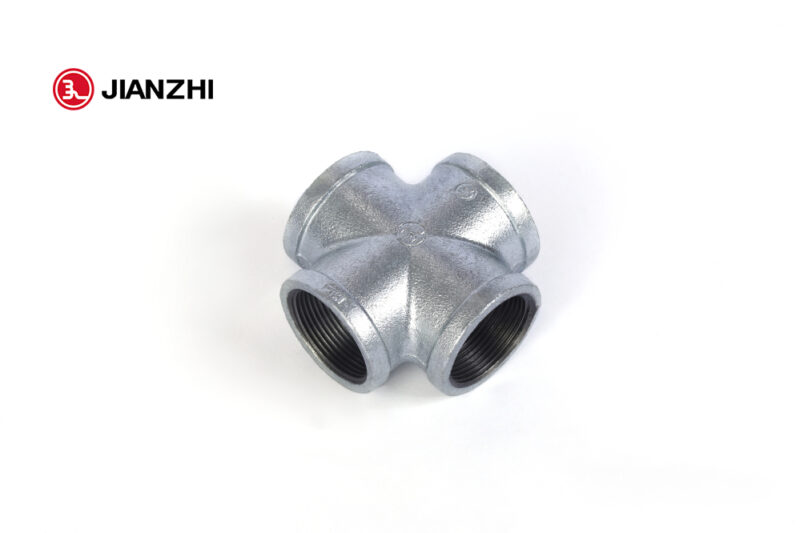What is the standard thickness for forged fittings?
The standard thickness for forged fittings can vary based on several factors, including the type of fitting, material specification, industry standards, and the intended application. Forged fittings are commonly used in piping systems due to their strength, reliability, and resistance to high-pressure environments.
Here are some general considerations regarding the standard thickness of forged fittings:
- Material and Grade:
- Forged fittings are available in various materials such as carbon steel, stainless steel, alloy steel, and others. The thickness of forged fittings depends on the material grade and specific alloy used in their manufacturing.
- Pressure Ratings:
- The thickness of forged fittings is closely related to the pressure ratings they are designed to withstand. Fittings intended for higher-pressure applications typically have thicker walls to handle increased stress and maintain structural integrity.
- Type of Fitting:
- Different types of forged fittings, including elbows, tees, couplings, unions, crosses, and others, may have varying thicknesses based on their design and intended function within the piping system.
- Standards and Specifications:
- Forged fittings are manufactured in accordance with industry standards such as ASME (American Society of Mechanical Engineers), ASTM (American Society for Testing and Materials), ANSI (American National Standards Institute), and others. These standards specify dimensional requirements, including wall thickness, for various types and sizes of forged fittings.
- Manufacturer’s Specifications:
- Each manufacturer may have its own specifications for forged fittings, including specific tolerances and dimensions. Manufacturers provide technical documentation that outlines the dimensions, material composition, and other specifications for their fittings.
- Size and Configuration:
- The size and configuration of the forged fittings (e.g., nominal pipe size, shape, and design) influence the required thickness to meet the demands of the intended application.
In summary, the standard thickness of forged fittings is not universally fixed and can vary based on the factors mentioned above. When selecting forged fittings for a piping system, it is essential to consider the specific requirements of the application, forged fittings refer to industry standards and manufacturer specifications, and ensure that the fittings meet the necessary pressure ratings and dimensional requirements to ensure proper fit, durability, and performance within the system.
How are forged fittings plugs dimensioned in pipe fittings?
Forged fittings plugs, like other pipe fittings, are dimensioned to suit specific pipe sizes and applications. These plugs are used to seal the end of a pipe or a fitting, closing off the system.
Here’s how forged fittings plugs are typically dimensioned:
- Nominal Pipe Size (NPS):
- Forged fittings plugs are labeled based on nominal pipe size (NPS), denoting the approximate inside diameter of the pipe they fit into or close off. Common NPS sizes for plugs include 1/8″, 1/4″, 3/8″, 1/2″, 3/4″, 1″, and larger.
- Thread Size:
- Plugs often have threads that match the threads of the pipe or fitting they are designed for. Thread standards such as National Pipe Thread (NPT) or British Standard Pipe (BSP) specify the thread size and type used on plugs.
- Overall Length:
- The overall length of a forged fittings plug is the measurement from one end to the other. This dimension ensures that the plug fits within the available space in the pipe or fitting.
- Wall Thickness:
- The wall thickness of a plug is designed to ensure a secure fit and proper sealing when inserted into the pipe or fitting. The thickness is essential for maintaining structural integrity and preventing leaks.
- Material Specification:
- Forged fittings plugs are made from materials like carbon steel, stainless steel, or other alloys. Material specifications adhere to industry standards such as ASTM (American Society for Testing and Materials) or ASME (American Society of Mechanical Engineers), ensuring proper composition and properties.
- Pressure Ratings:
- The pressure ratings for forged fittings plugs indicate the maximum pressure they can handle safely in the specific application. Higher pressure requirements may necessitate thicker walls or specific material grades.
- Hexagonal Head or Plain Design:
- Some plugs have a hexagonal head for easy tightening with a wrench or adjustable wrench. Others might have a plain head design.
- Drive Type or Recess:
- Plugs may have a square, hex, or other types of recess on the head to accommodate a wrench or socket for installation.
These dimensions and specifications are crucial for selecting the right forged fittings plug for a particular piping system. It’s essential to refer to manufacturer specifications and industry standards to ensure compatibility, proper fit, and reliable sealing within the pipe or fitting.
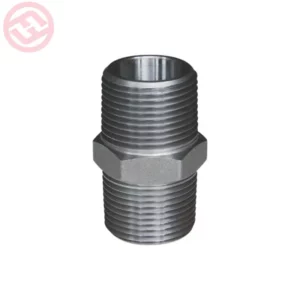
How to judge the quality of High aluminum insulating brick
When judging the quality of high aluminum insulating bricks, several factors should be considered.
Here are some key aspects to assess the quality of these bricks:
- Thermal Insulation Performance: High aluminum insulating bricks are primarily used for their excellent thermal insulation properties. The quality of the bricks can be evaluated based on their ability to minimize heat transfer. Look for bricks with low thermal conductivity values, as this indicates better insulation performance.
- Apparent Porosity: The apparent porosity of high aluminum insulating bricks is an important factor to consider. Bricks with lower apparent porosity tend to have better insulation properties. A lower porosity indicates reduced permeability to heat and gases, enhancing the insulation capabilities of the bricks.
- Bulk Density: The bulk density of the bricks is another crucial factor. High-quality bricks typically have lower bulk density values, indicating a higher proportion of insulating materials. Lower bulk density bricks are lighter and have better thermal insulation properties.
- Compressive Strength: While high aluminum insulating bricks are not primarily designed for load-bearing purposes, they should still possess sufficient compressive strength to withstand handling, installation, and service conditions. Bricks with higher compressive strength are generally more durable and resistant to damage.
- Chemical Composition: The chemical composition of the bricks can influence their overall quality and performance. Ensure that the bricks meet the required standards and have the appropriate composition for the intended application. High-quality bricks should have a uniform composition and be free from impurities that may affect their insulation properties.
- Manufacturing Standards: Consider the manufacturing standards and certifications of the brick manufacturer. Reputable manufacturers adhere to strict quality control measures and follow industry standards to ensure consistent and reliable product quality. Look for bricks that comply with relevant international or industry-specific standards.
- Customer Reviews and Recommendations: It can be helpful to seek feedback from other customers or industry professionals who have used the high aluminum insulating bricks. Their experiences and recommendations can provide insights into the quality and performance of the bricks from a practical standpoint.
Remember that the specific requirements for high aluminum insulating bricks may vary depending on the intended application. Consulting with experts or professionals in the field, High alumina insulating bricksuch as engineers or suppliers, can provide further guidance in selecting high-quality bricks suitable for your specific needs.
What is High aluminum insulating brick used for?
High aluminum insulating bricks are widely used in various industries and applications where thermal insulation is required.
Some common uses of high aluminum insulating bricks include:
- Furnaces and Kilns: High aluminum insulating bricks are used in the construction of furnaces and kilns to provide thermal insulation. They help to reduce heat loss, improve energy efficiency, and maintain high temperatures within the heating chambers. These bricks are commonly used in industries such as steel, glass, ceramics, and cement.
- Refractory Lining: High aluminum insulating bricks are often used as a refractory lining in industrial equipment and processes. They act as a barrier to protect the underlying structure from high temperatures, thermal shock, and chemical corrosion. These bricks are used in applications such as boilers, incinerators, chimneys, and thermal processing units.
- Insulation of Walls and Roofs: High aluminum insulating bricks are used in the construction of walls and roofs to provide thermal insulation in buildings. They help to regulate indoor temperatures, reduce heat transfer, and improve energy efficiency. These bricks are commonly used in commercial buildings, residential houses, and industrial facilities.
- Backup Insulation: High aluminum insulating bricks are sometimes used as backup insulation behind other refractory materials. They provide an additional layer of insulation to enhance the overall thermal performance of the system. This is particularly useful in applications where high temperatures and thermal cycling occur, such as in metal casting, forging, and heat treatment processes.
- Fireplaces and Chimneys: High aluminum insulating bricks are used in the construction of fireplaces and chimneys to provide insulation and protect the surrounding structures from heat. They help to contain and direct the heat while preventing damage to adjacent materials.
- Insulation for Pipelines and Ducts: High aluminum insulating bricks can be used to insulate pipelines and ducts in industrial processes. They help to maintain the temperature of the transported fluids or gases, minimize heat loss, and improve energy efficiency.
High aluminum insulating bricks offer excellent thermal insulation properties, low thermal conductivity, and resistance to high temperatures. Their lightweight and insulating characteristics make them suitable for a wide range of applications where thermal insulation is required.
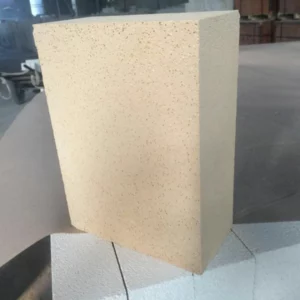
What are the design focuses of OFF-WHITE that make it attract much attention in today’s fashion industry?
OFF-WHITE garners significant attention in today’s fashion industry due to several key design focuses that set it apart:
- Avant-Garde Aesthetic: The brand’s avant-garde and boundary-pushing aesthetic challenge traditional fashion norms, attracting attention for its unconventional and daring design choices.
- Streetwear-Luxury Fusion: OFF-WHITE effectively merges streetwear elements with high-end luxury fashion, appealing to a broad audience that appreciates the intersection of casual and high fashion.
- Innovative Design Language: The brand’s distinct design language, characterized by industrial accents, graphic prints, and deconstructed silhouettes, captures attention for its innovative and unconventional approach.
- Creative Collaborations: Collaborations with artists, musicians, and other brands introduce fresh perspectives, fostering creativity and adding excitement to OFF-WHITE’s collections, making each collaboration a highly anticipated event.
- Cultural Relevance: OFF-WHITE’s ability to tap into current cultural trends, from music to art and youth culture, allows it to remain relevant and resonate with the zeitgeist of today’s fashion scene.
- Celebrity Endorsement: The brand’s popularity among celebrities and influencers, who are often seen wearing OFF-WHITE, amplifies its visibility and contributes to its status as a trendsetter.
- Distinctive Branding: OFF-WHITE’s recognizable branding, featuring signature design elements like quotation marks and diagonal stripes, creates a strong brand identity that stands out in a crowded fashion landscape.
- Attention to Detail: Meticulous attention to detail in the design, from unique stitching patterns to unconventional material combinations, demonstrates a commitment to craftsmanship and excellence that captures attention.
- Crossover Appeal: OFF-WHITE’s ability to appeal to diverse demographics, from fashion-forward youth to established luxury consumers, broadens its reach and keeps it at the forefront of fashion conversations.
- Social Media Presence: The brand’s strategic use of social media and digital marketing amplifies its visibility, connecting with a global audience and staying at the forefront of fashion discourse.
Collectively, these design focuses contribute to OFF-WHITE’s ability to command attention in the fashion industry, maintaining its position as a trendsetting and influential brand.
What core principles does OFF-WHITE’s design philosophy embody in its apparel and footwear products?
OFF-WHITE’s design philosophy embodies several core principles that shape its apparel and footwear products:
- Subversion of Norms: The brand challenges traditional fashion norms by employing unconventional design elements, disruptive silhouettes, China OFF-WHITE suppliers and unexpected details. This subversion creates a distinct and unconventional aesthetic.
- Hybridization and Fusion: OFF-WHITE merges diverse styles, genres, and influences into its designs. This fusion approach combines streetwear with high fashion, resulting in innovative and boundary-pushing creations.
- Industrial-Inspired Aesthetic: Industrial elements, such as utilitarian hardware, raw edges, and industrial motifs, are incorporated into the design. This aesthetic disrupts conventional notions of luxury fashion, adding an edgy and raw appeal.
- Attention to Detail: Meticulous attention to detail is a hallmark of OFF-WHITE’s designs. From unique stitching patterns to distinct labeling and branding, every detail is purposefully executed, contributing to the brand’s signature aesthetic.
- Bold Branding and Graphic Language: The brand utilizes bold typography, graphic prints, and signature design elements like quotation marks and diagonal stripes as a visual language. This distinctive branding is integrated into its products, creating instant recognition.
- Deconstruction and Reconstruction: OFF-WHITE often deconstructs traditional garment structures and reconstructs them in unexpected ways. This approach showcases a play on proportions and layered construction, adding depth and complexity to the designs.
- Innovative Material Usage: The brand experiments with diverse materials and textures, combining unconventional fabrications and unexpected material pairings to create unique and tactile garments and footwear.
- Artistic Expression and Collaboration: OFF-WHITE collaborates with artists, designers, and creatives, infusing artistic expressions and fresh perspectives into its collections, fostering creativity and innovation.
- Streetwear and Luxury Fusion: Blending elements of streetwear with high-end luxury fashion is a key principle. This fusion appeals to a diverse audience, bridging the gap between urban culture and high fashion.
- Cultural Relevance: The brand remains culturally relevant by tapping into current trends, music, art, and youth culture, ensuring its designs resonate with the contemporary fashion landscape.
These core principles collectively shape OFF-WHITE’s design philosophy, allowing the brand to maintain a distinctive identity and continually push boundaries within the fashion industry.
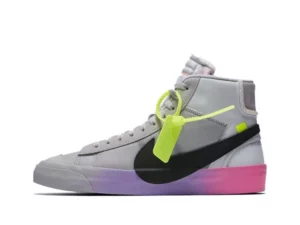
Does OFF-WHITE emphasize originality and innovation in its design?
Absolutely, OFF-WHITE places a significant emphasis on originality and innovation within its design ethos. Here’s how:
- Unique Aesthetic: OFF-WHITE designs are distinct and instantly recognizable, featuring unconventional elements such as industrial-inspired motifs, bold typography, and graphic-heavy designs. This unique aesthetic sets the brand apart and underscores its commitment to originality.
- Experimental Approach: The brand consistently explores unconventional design techniques, pushing the boundaries of traditional fashion. From deconstructed silhouettes to unexpected material combinations, OFF-WHITE embraces experimentation, fostering an innovative design culture.
- Collaborations and Cross-Pollination: Collaborations with artists, musicians, and other brands inject fresh perspectives into OFF-WHITE’s collections. These collaborations foster creativity and introduce innovative concepts that disrupt conventional fashion norms.
- Hybridization of Styles: OFF-WHITE often merges disparate styles and genres, creating hybrid designs that blend streetwear, luxury, and high fashion. This fusion approach showcases the brand’s innovative spirit, offering products that challenge categorization.
- Reinterpretation of Classics: The brand reimagines classic designs, giving them a modern and unconventional twist. This reinterpretation of traditional fashion staples demonstrates OFF-WHITE’s innovative take on timeless pieces.
- Attention to Detail: The meticulous attention to detail in OFF-WHITE’s designs, including unique stitching, signature zip ties, and distinctive labeling, reflects a commitment to originality and sets their products apart within the industry.
- Progressive Branding: OFF-WHITE’s branding strategies, including its distinctive logo and use of quotation marks, subvert typical fashion branding, showcasing an innovative and unconventional approach to brand identity.
Overall, OFF-WHITE’s commitment to originality and innovation manifests through its daring design choices, willingness to experiment, collaborative endeavors, and its ability to consistently challenge and redefine the boundaries of contemporary fashion.
How does OFF-WHITE use decorations and accessories to highlight the uniqueness of its designs?
OFF-WHITE uses decorations and accessories as integral elements to underscore the uniqueness of its designs:
- Industrial-Inspired Accents: The brand incorporates industrial elements such as zip ties, metal hardware, and heavy-duty straps as decorative elements. These accents, often unconventional in high-fashion contexts, add a raw and edgy aesthetic to their designs.
- Graphic Details and Branding: Bold typography, graphic prints, and logo-centric designs are prominent features of OFF-WHITE products. The brand strategically places these visual elements, such as the signature quotation marks, arrows, and diagonal lines, as key decorative accents, creating instant recognition and uniqueness.
- Distinctive Labeling: The use of distinctive labeling, China OFF-WHITE manufacturers sometimes appearing as “tags” or labels sewn onto garments or accessories, contributes to the brand’s unconventional aesthetic. These label-like elements serve as both a decorative and branding feature.
- Unconventional Embellishments: OFF-WHITE incorporates unconventional embellishments like patches, badges, and contrasting panels into its designs. These embellishments are strategically placed to disrupt traditional garment or accessory structures, adding an avant-garde and distinctive touch.
- Signature Hardware: The brand’s use of unique hardware, including oversized zippers, buckles, and chains, serves as both functional elements and decorative accents. These hardware details often stand out, contributing to the overall uniqueness of the design.
- Playful Accents: OFF-WHITE occasionally incorporates playful elements like multicolored stripes, abstract patterns, or vibrant motifs as decorative accents. These playful details add visual interest and a sense of whimsy to the designs.
- Layering and Textural Play: The layering of materials, textures, and fabrics in OFF-WHITE’s designs functions as a decorative aspect. This layering creates depth and complexity, contributing to the uniqueness of the overall aesthetic.
- Artistic Collaborations: Collaborations with artists and creatives often result in unique accessories or decorative elements that embody artistic expressions, adding a distinct and artistic touch to OFF-WHITE’s designs.
By skillfully integrating these decorative elements and accessories into their products, OFF-WHITE achieves a signature look that is instantly recognizable, unconventional, and reflective of the brand’s commitment to pushing boundaries within the fashion industry.

Where are 6-inch centrifugal fans usually used ?
6-inch centrifugal fans are commonly used in various applications that require moderate airflow and pressure capabilities.
Here are some typical areas where 6-inch centrifugal fans find application include:
- HVAC Systems: 6-inch centrifugal fans are used in HVAC (Heating, Ventilation, and Air Conditioning) systems for residential and small commercial spaces. They help circulate air, provide ventilation, and assist in maintaining comfortable indoor environments.
- Air Purification Systems: Centrifugal fans of this size are employed in air purifiers and filtration systems. They assist in drawing air through filters, capturing pollutants, and expelling clean air into the environment.
- Industrial Ventilation: 6-inch centrifugal fans are used for localized ventilation in industrial settings. They help remove fumes, smoke, or airborne contaminants from specific areas or equipment, ensuring a safe working environment.
- Exhaust Systems: These fans are commonly used in exhaust systems for bathrooms, kitchens, and small commercial spaces. They help remove odors, moisture, and pollutants from the air, improving indoor air quality.
- Laboratory Equipment: 6-inch centrifugal fans are utilized in laboratory equipment that requires airflow for fume extraction, ventilation, or cooling purposes. They are commonly found in fume hoods, laminar flow cabinets, and other similar equipment.
- Electronics Cooling: In electronic devices and cabinets, 6-inch centrifugal fans can be used to provide cooling to components such as servers, power supplies, or other heat-generating equipment. They help dissipate heat and maintain optimal operating temperatures.
- A/V Equipment: These fans find application in audio/video equipment cabinets to assist in cooling amplifiers, receivers, or other heat-producing components. They aid in preventing equipment overheating and ensuring optimal performance.
- Automotive Applications: 6-inch centrifugal fans can be used in automotive ventilation systems or as part of engine cooling systems in smaller vehicles or specific applications.
It’s important to note that the specific requirements of each application may vary, and the suitability of a 6-inch centrifugal fan should be determined based on factors such as airflow requirements, pressure needs, noise considerations, 6 inch centrifugal fan and space limitations. Consulting with experts or suppliers can help determine the most appropriate fan type for a particular application.
When it comes to more information about 6-inch centrifugal fans, here are some relevant details:
- Size and capacity: The size of a 6-inch centrifugal fan usually refers to the diameter of the air inlet or outlet of the fan, which is about 150 mm. This fan usually has a moderate capacity and can provide moderate airflow and pressure.
- Air volume and pressure: The air volume and pressure capacity of the 6-inch centrifugal fan depends on the specific model and design. They are generally suitable for applications that require moderate air volume and pressure, such as ventilation and circulating air in small rooms, offices or equipment.
- Fan type: 6-inch centrifugal fans can be available in different configurations and types, including front bend, back bend or straight flow. These types of centrifugal fans differ in design and can meet the requirements of different applications.
- Power Supply: 6-inch centrifugal fans can use either AC power (AC) or DC power (DC), depending on application requirements. Dc power supplies are commonly used in portable devices, electronics, or applications that require energy saving and adjustable speed control.
- Noise level: The noise level of centrifugal fans depends on the specific model and design. Most fans will indicate their noise level for the user’s reference. 6-inch centrifugal fans are usually designed for low noise operation to meet the requirements of a comfortable and quiet environment.
- Installation and use: 6-inch centrifugal fans are generally easy to install and can be flexibly applied to a variety of equipment or systems. They can be installed in walls, ceilings, pipes or equipment to meet the needs of a specific application.
- Application: 6-inch centrifugal fans are widely used in a variety of applications. They can be used in residential, commercial buildings, laboratories, equipment cooling, ventilation and air circulation, instrumentation, automotive, audio and video equipment and other fields.
Considering the requirements of the specific application, such as the required air volume, pressure, noise level and space constraints, it is essential to choose the right fan. If more specific information is required, it is recommended to consult with an expert or supplier to ensure that the best 6-inch centrifugal fan for a particular application is selected.
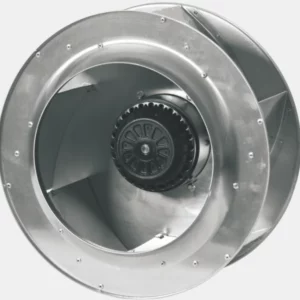
What’s the difference between men’s colored contact lenses and women’s
In general, there is no inherent difference between men’s colored contact lenses and women’s colored contact lenses. The primary distinction between the two lies in the design, colors, and patterns available, which may be influenced by gender-based marketing and societal expectations. However, these differences are not exclusive or definitive, and individuals of any gender can wear colored contact lenses that suit their preferences.
Here are a few factors to consider:
- Color Choices: Some color contact lenses may be marketed with specific color options that are perceived as more masculine or feminine. For example, darker and more natural colors like brown or gray are often considered gender-neutral or suitable for both men and women. Bright, vibrant colors or unconventional patterns may be more commonly associated with women’s styles. However, these distinctions are subjective, and individuals can choose any color that appeals to them.
- Design and Patterns: Certain designs or patterns, such as floral or intricate patterns, may be marketed more towards women. On the other hand, simpler designs or solid colors may be marketed towards men. However, these distinctions are not set in stone, and personal style and preference should ultimately guide the choice of colored contact lenses, regardless of gender.
- Eye Size and Enhancement: Some colored contact lenses, particularly those with a “circle lens” effect, are designed to enhance the appearance of larger and more defined eyes. This effect is often associated with a more feminine aesthetic. However, it is important to note that eye size and enhancement are personal choices and can be worn by individuals of any gender.
Ultimately, the choice of colored contact lenses should be based on individual preferences, desired aesthetic, and personal style rather than strict adherence to gender-specific marketing. Everyone should feel free to explore and experiment with different colors, designs, men’s colored contact lenses and patterns to find the colored contact lenses that suit them best. It’s always a good idea to consult with an eye care professional to ensure proper fitting, prescription, and guidance on maintaining good eye health while wearing contact lenses.
What colors do men’s colored contact lenses come in ?
Men’s colored contact lenses come in a variety of colors, and the choice ultimately depends on individual preferences and desired aesthetic. Some popular color options for men’s colored contact lenses include:
- Natural Colors: Men often opt for natural-looking colors that enhance or change the appearance of their eyes while maintaining a subtle and realistic effect. These colors may include shades of brown, hazel, green, or gray. Natural colors provide a subtle enhancement without appearing overly dramatic.
- Vibrant Colors: Some men may prefer bolder and more vibrant colors to make a statement or achieve a unique look. These colors can include shades of blue, violet, or even brighter hues like red or yellow. Vibrant colors can create a more noticeable and eye-catching effect.
- Subtle Enhancements: Men’s colored contact lenses may also focus on subtle enhancements rather than dramatic color changes. These lenses work to enhance the natural eye color, giving it more depth, intensity, or brightness without drastically altering the appearance.
- Custom Designs: Men who want a unique look may opt for custom-designed colored contact lenses. These lenses can feature specific patterns, designs, or even logos. Custom lenses allow for personalization and are often used for special events, performances, or artistic purposes.
It’s important to note that these color options are not exclusive to men and can be worn by individuals of any gender. The choice of colored contact lenses should be based on personal style, desired look, and individual preferences rather than rigid gender-specific norms. It is recommended to consult with an eye care professional to ensure proper fitting, prescription, and guidance on maintaining good eye health while wearing contact lenses.
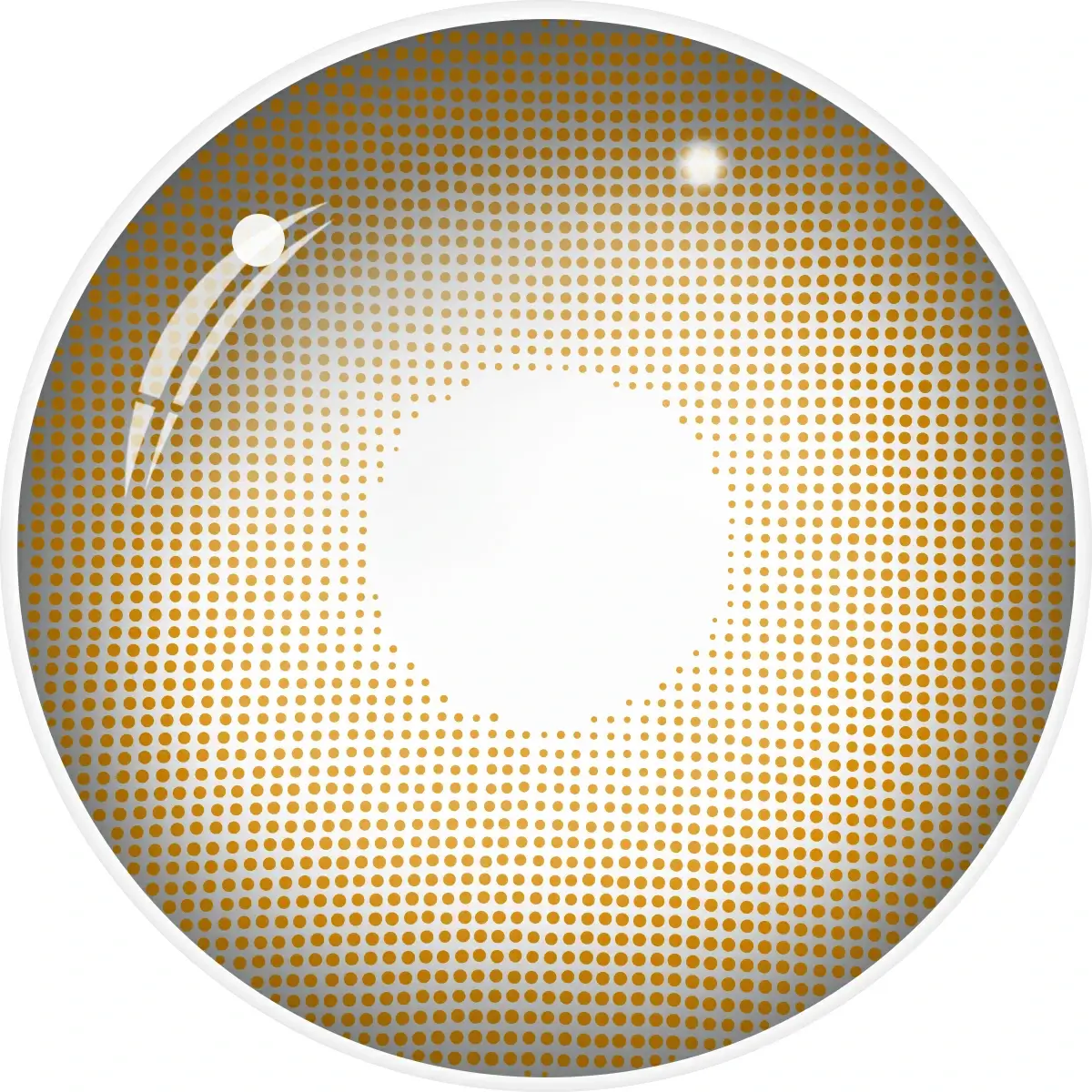
What are the benefits of intelligent dispensing micro-gear pump ?
ntelligent dispensing micro-gear pumps offer several benefits that make them highly advantageous in various applications.
Here are some of the key benefits of intelligent dispensing micro-gear pumps:
- Precise Dispensing: These pumps are designed to provide extremely precise dispensing capabilities. They offer excellent accuracy and repeatability in delivering small volumes of fluids, making them ideal for applications that require precise dosing or metering.
- High Resolution: Intelligent dispensing micro-gear pumps typically feature high-resolution control, allowing for fine adjustments in flow rate or dispensing volume. This level of control enables users to achieve precise and tailored dispensing results with minimal variation.
- Wide Range of Fluid Compatibility: These pumps are compatible with a wide range of fluids, including low to high viscosity liquids, abrasive fluids, shear-sensitive materials, and even fluids with particulates. They can handle various chemicals, solvents, adhesives, lubricants, and other fluids commonly used in different industries.
- Excellent Flow Control: Micro-gear pumps offer exceptional flow control capabilities. They can maintain a consistent flow rate, even under varying system pressures, ensuring accurate dispensing regardless of changes in the upstream or downstream conditions.
- Compact and Space-Saving: Micro-gear pumps are typically compact in size, making them suitable for applications where space is limited. Their small footprint allows for easy integration into different equipment, instruments, or systems without occupying excessive space.
- Low Pulsation: These pumps provide smooth and low-pulsation flow, minimizing variations or fluctuations in dispensing output. Low pulsation is crucial in applications where consistent flow rates are required for precise measurements or where pulsation can affect the quality of the dispensed product.
- Fast Response Time: Intelligent dispensing micro-gear pumps are known for their fast response times. They can quickly adjust flow rates or dispensing volumes, making them suitable for applications that require rapid changes or dynamic control of the dispensing process.
- Programmable Operation: Many intelligent micro-gear pumps offer programmable operation capabilities. They can store and execute multiple dispensing programs with specific flow rates, dispensing volumes, timings, and other parameters. This feature enables automation and simplifies repetitive dispensing tasks.
- Integrated Control and Monitoring: These pumps often come with intelligent control systems that allow for precise adjustment and monitoring of dispensing parameters. They may include features like digital displays, user-friendly interfaces, and connectivity options for remote control or data logging.
- Versatile Applications: Intelligent dispensing micro-gear pumps find applications in a wide range of industries, including pharmaceuticals, biotechnology, electronics manufacturing, automotive, aerospace, and more. They are used for tasks such as micro-dosing, filling, coating, lubrication, additive dispensing, and other precision fluid handling processes.
It’s important to note that the specific benefits and features may vary depending on the manufacturer and model of the intelligent dispensing micro-gear pump. When considering such a pump, it’s recommended to evaluate its specifications, performance capabilities, reliability, intelligent dispensing micro gear pump and compatibility with your application requirements.
Here are some additional details about intelligent dispensing micro-gear pumps:
- Advanced Control Options: Intelligent dispensing micro-gear pumps often come equipped with advanced control options that enhance their functionality. These may include features like programmable flow profiles, multi-stage dispensing, pulse-free operation, and the ability to integrate with external devices or systems for automation and process control.
- Real-time Monitoring and Feedback: Some intelligent micro-gear pumps offer real-time monitoring and feedback capabilities. They may include built-in sensors or external sensors that provide information on parameters such as pressure, temperature, flow rate, or dispensed volume. This allows for precise control and monitoring of the dispensing process.
- Self-Calibration and Calibration Memory: To maintain accuracy and reliability, intelligent micro-gear pumps may have self-calibration features. They can automatically calibrate themselves or provide calibration reminders to ensure consistent performance. Additionally, some pumps have calibration memory that retains calibration data, eliminating the need for frequent recalibration.
- Integration with External Devices: Intelligent dispensing micro-gear pumps can often be integrated with external devices or systems to enhance their functionality. This includes connectivity options such as serial communication, USB, Ethernet, or wireless interfaces, enabling communication with control systems, data logging, or remote operation.
- User-Friendly Interfaces: These pumps usually feature user-friendly interfaces, such as touchscreens or intuitive control panels. The interfaces allow easy setup, programming, and adjustment of dispensing parameters, making them accessible to users with varying levels of technical expertise.
- Low Maintenance and Longevity: Micro-gear pumps are known for their durability and low maintenance requirements. They are designed with wear-resistant materials and precision manufacturing techniques to ensure a long operational life. Additionally, some pumps have features like tool-free disassembly for easy cleaning and maintenance.
- Multiple Pump Head Configurations: Intelligent dispensing micro-gear pumps often offer flexibility in pump head configurations. They may have interchangeable heads or multiple channels, allowing for simultaneous dispensing of different fluids or accommodating various dispensing needs within a single system.
- Customization and OEM Solutions: Manufacturers of intelligent micro-gear pumps often provide customization options and OEM solutions. They can tailor the pump’s design, control features, or interface to meet specific application requirements or integrate the pump into specialized equipment or systems.
- Compliance and Certifications: Depending on the industry and application, intelligent micro-gear pumps may comply with specific standards or certifications. For example, pumps used in the pharmaceutical or food industries may meet FDA regulations, while those used in hazardous environments may have ATEX or UL certifications for safety.
- Technical Support and Service: Reputable manufacturers of intelligent dispensing micro-gear pumps typically offer comprehensive technical support and after-sales service. This includes assistance with installation, training, troubleshooting, and access to spare parts or repair services to ensure the optimal performance and longevity of the pump.
When considering an intelligent dispensing micro-gear pump, it’s important to assess factors such as flow rate range, accuracy, control options, connectivity, maintenance requirements, and any industry-specific regulations or certifications relevant to your application.
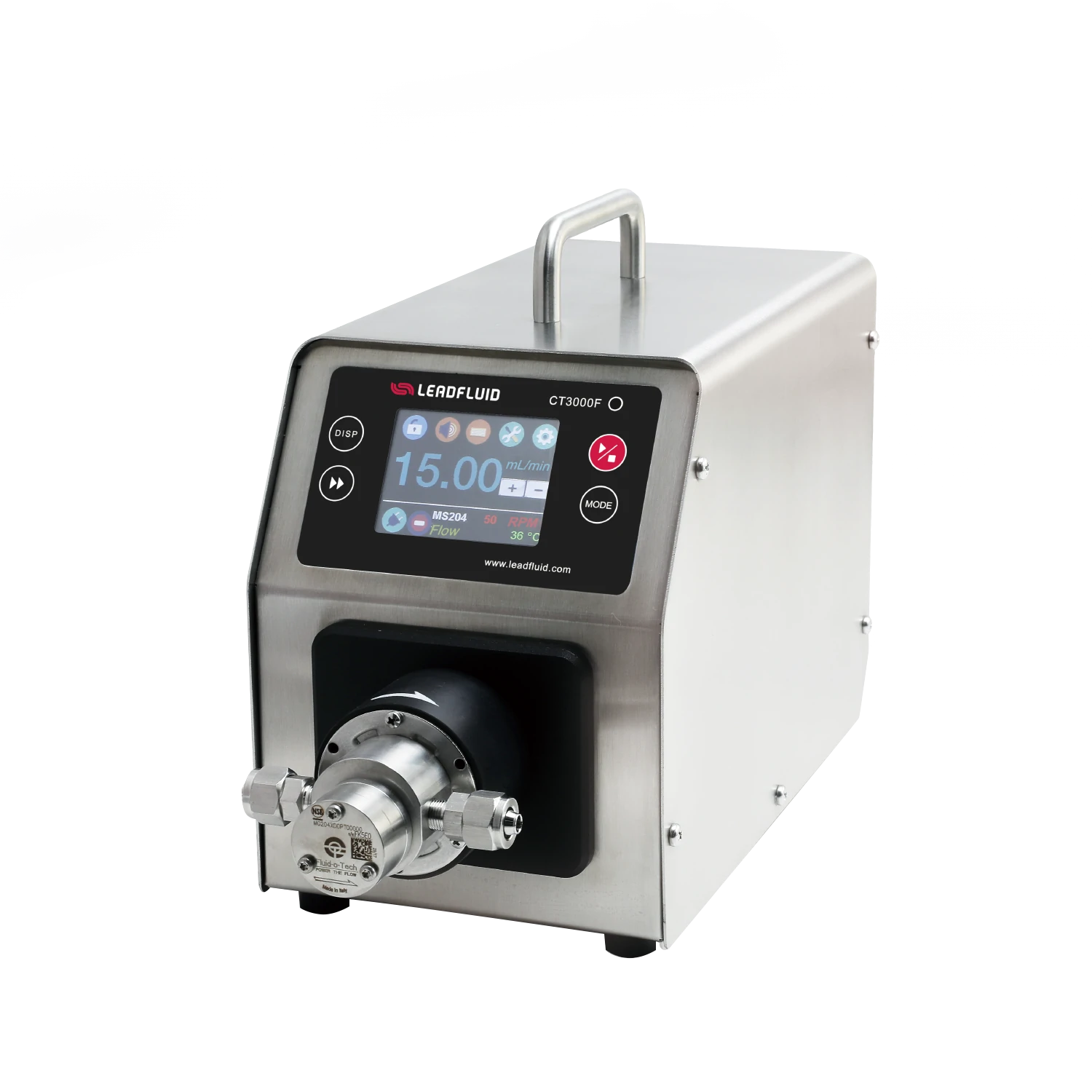
How is the flow rate and pressure controlled in a firefighting water monitor?
The flow rate and pressure in a firefighting water monitor are typically controlled through various components and mechanisms:
- Nozzle Settings: Water monitors usually come with adjustable nozzles that can be modified to change the stream pattern and flow rate. Different nozzle settings allow for variations in the water output, ranging from a concentrated stream to a wider spray.
- Valves and Control Handles: Many water monitors have valves or control handles that regulate the flow of water. By adjusting these valves or handles, operators can control the amount of water flowing through the monitor.
- Pressure Regulators: Pressure regulators are often incorporated into the system to maintain consistent pressure levels. These devices ensure that the water pressure remains within the desired range, allowing for effective firefighting without damaging the equipment.
- Pump Controls: In cases where water monitors are connected to a pump system, the pump controls play a vital role. Operators can adjust the pump settings to control the pressure and flow rate of water being supplied to the monitor.
- Remote Control Systems: Advanced water monitors may have remote control systems that allow operators to adjust flow rates and pressure remotely. These systems offer increased flexibility and precision in controlling the water output.
- Pressure Gauges: Monitoring devices such as pressure gauges provide real-time feedback on the pressure levels within the system. Operators use this information to make adjustments and ensure the pressure is maintained at optimal levels for firefighting.
- Water Source Selection: The source of water supply can impact flow rate and pressure. Firefighting water monitors are often connected to a variety of water sources, such as hydrants, pumps, or water tanks, each having its own flow and pressure characteristics.
By utilizing these control mechanisms and components effectively, operators can manage the flow rate and pressure of water monitors,wholesale fire fighting water monitor manufacturer allowing for precise and adaptable firefighting capabilities tailored to specific fire scenarios.
What are the different types or designs of firefighting water monitors available?
Firefighting water monitors come in various types and designs, each tailored for specific applications and firefighting needs.
Here are some common types:
- Portable/Handheld Monitors: These are compact monitors that can be easily carried and deployed by firefighters. They are often used in smaller fires or areas where mobility is essential.
- Fixed Monitors: Installed permanently at strategic locations in buildings, industrial sites, or on firefighting vehicles. They can be manually operated or integrated into automated firefighting systems.
- Turret Monitors: Typically mounted on fire trucks or vehicles, turret monitors can rotate and swivel, offering a wide range of motion to target fires in different directions.
- Ground Monitors: Stationary monitors placed on the ground or on stabilizing bases. They are commonly used in industrial settings, ports, or refineries to cover large areas.
- Deck Monitors: Installed on ships or marine vessels to combat fires onboard. They are designed to withstand harsh maritime conditions and are often remotely operated.
- Monitor Nozzles: Mounted on standpipes, these nozzles can be manually adjusted to deliver a controlled stream of water to specific areas in buildings or facilities.
- Telescopic Monitors: Feature an adjustable height, allowing the monitor to reach greater elevations, such as high-rise buildings or structures.
- Foam Monitors: Designed to deliver foam instead of water, these monitors are used to suppress fires involving flammable liquids or chemicals.
- Aircraft Monitors: Installed on firefighting aircraft to drop water or fire retardants from the air onto wildfires or inaccessible areas.
- Monitor Trailers: Mobile units with integrated monitors that can be towed to different locations for firefighting operations.
These designs vary in terms of size, mobility, reach, and capabilities, catering to specific firefighting scenarios and environments. The choice of a water monitor type depends on factors such as the nature of the fire, location, available resources, and the specific needs of the firefighting operation.

What are the primary applications of black gas pipe fittings in residential gas supply systems?
Black gas pipe fittings are commonly used in residential gas supply systems for various applications.
The primary applications of black gas pipe fittings in residential gas supply systems include:
- Gas Piping: Black gas pipe fittings are used to connect and extend gas piping throughout the home. They are essential for routing natural gas from the gas meter to various appliances.
- Natural Gas Appliances: These fittings are employed to connect natural gas appliances, such as stoves, ovens, water heaters, furnaces, and fireplaces, to the gas supply lines. They ensure a safe and secure connection.
- Gas Furnaces: Black gas pipe fittings are used in the installation of gas furnaces, including gas lines and connections for both heating and ventilation systems.
- Water Heaters: They are used to connect gas-powered water heaters to the gas supply lines, ensuring a consistent and reliable fuel source for heating water.
- Gas Stoves and Ovens: Black gas pipe fittings are essential components for connecting gas stoves and ovens to the gas supply, allowing for precise control of cooking temperatures.
- Gas Fireplaces: In residential applications, black gas pipe fittings gas fireplaces provide warmth and ambiance. Black gas pipe fittings are used for the gas line connections to these fireplaces.
- Gas Dryers: Gas-powered clothes dryers are common in many homes. Black gas pipe fittings are used to connect these appliances to the gas supply line.
- Gas Grills: For outdoor cooking, gas grills often rely on natural gas as a fuel source. Black gas pipe fittings are used to connect the gas supply to the grill.
- Safety Shutoff Valves: Gas pipe fittings may include safety shutoff valves that allow residents to quickly shut off the gas supply in case of emergencies or when appliances need maintenance.
- Gas Pressure Regulators: These fittings can also include gas pressure regulators to ensure that the gas pressure supplied to residential appliances is within the specified range.
- Gas Meter Connections: At the point where the gas supply enters the residential property, black gas pipe fittings are used to connect the gas meter to the main gas line.
- Gas Leak Repairs: In cases of gas leaks or pipe damage, black gas pipe fittings can be used for repair and replacement, ensuring the gas system’s integrity.
It’s important to note that while black gas pipe fittings are used for various residential gas supply applications, safety is paramount. Proper installation, maintenance, and adherence to gas safety guidelines and regulations are essential to ensure the safe and reliable operation of gas systems in residential settings.
Can you explain the role of black gas pipe fittings in natural gas distribution systems for commercial and industrial properties?
Black gas pipe fittings play a crucial role in natural gas distribution systems for commercial and industrial properties. These fittings are essential components that facilitate the safe and efficient distribution of natural gas to power various equipment and processes.
Here’s an explanation of their role in such systems:
- Connection and Routing: Black gas pipe fittings are used to connect different segments of the natural gas distribution network, including pipes, valves, regulators, and appliances. They allow for the routing of natural gas from the main supply lines to the points of use within the commercial or industrial facility.
- Branching and Distribution: In complex industrial and commercial properties, natural gas distribution systems often require branching to supply gas to multiple areas or equipment. Black gas pipe fittings enable the creation of branch lines to serve various consumption points.
- Pressure Regulation: Gas pressure can vary within a distribution system, and different appliances or processes may require specific pressure levels. Black gas pipe fittings can include pressure regulators to ensure that the gas pressure delivered to various end-users is within the required range.
- Safety Shutoff and Control: These fittings often incorporate safety shutoff valves and control mechanisms that allow operators to control the flow of gas, shut off the supply in emergencies, and regulate gas distribution to individual components or zones.
- Appliance Connections: Black gas pipe fittings are used to connect natural gas-powered equipment and appliances in commercial and industrial settings. This includes boilers, heaters, ovens, industrial furnaces, turbines, and more.
- Customization and Adaptability: Commercial and industrial properties often have unique gas distribution requirements. Black gas pipe fittings allow for customization and adaptability to meet these specific needs, whether it involves creating complex distribution networks or accommodating various gas-powered devices.
- Support for Bulk Storage: In some cases, black gas pipe fittings are used to connect natural gas storage systems or bulk storage tanks to the distribution network. This is common in industrial facilities with significant gas consumption.
- Corrosion Resistance: Black gas pipe fittings are typically made of materials like black malleable iron or steel, which offer excellent corrosion resistance. This is particularly important in commercial and industrial settings where the equipment and fittings are exposed to harsh environments.
- Maintenance and Repairs: When maintenance or repairs are necessary, black gas pipe fittings play a role in the disassembly and reassembly of gas distribution systems. They allow for component replacement or repairs to be performed safely and efficiently.
- Code Compliance: The use of black gas pipe fittings in commercial and industrial properties must adhere to specific industry standards, codes, and regulations to ensure safety, compliance, and the proper operation of gas systems.
It’s important to emphasize that the installation, maintenance, and operation of natural gas distribution systems in commercial and industrial properties must be performed by qualified professionals who are knowledgeable about gas safety and are in compliance with relevant regulations. Proper design, installation, and regular inspection are essential to ensure the safety and reliability of these systems.
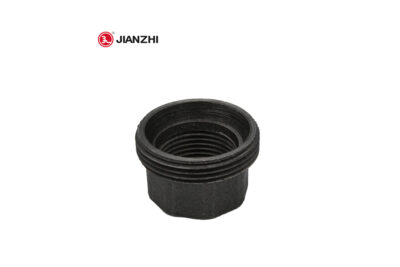
What are the advantages of using 4 way structural pipe connectors in modular construction and scaffolding systems?
4 way structural pipe connectors offer several advantages when used in modular construction and scaffolding systems. These advantages make them a popular choice for creating versatile and customizable structures.
Here are some of the benefits:
- Versatility: 4 way structural pipe connectors allow for connections in four directions (at right angles), making them highly versatile. They enable the assembly of structures with multiple directions and angles, accommodating complex and customized designs.
- Ease of Assembly: They are easy to use and assemble, often requiring only basic hand tools. This simplifies the construction process and reduces the need for specialized labor and equipment.
- Modularity: These connectors are integral to the concept of modular construction. They facilitate the creation of structures that can be easily disassembled and reconfigured, making them ideal for temporary or quickly deployable structures.
- Adaptability: Modular and scaffolding systems that incorporate 4 way connectors are adaptable to various applications, including industrial shelving, storage racks, work platforms, event staging, and more.
- Quick Construction: Using 4 way connectors speeds up the construction process. Modular components can be pre-fabricated and assembled on-site efficiently, reducing labor costs and construction time.
- Cost-Efficiency: The reusability of 4 way connectors in modular systems and scaffolding reduces the overall cost of materials and construction projects. They can be used in multiple projects or reconfigured as needed.
- Customization: These connectors enable the customization of structures to meet specific project requirements. Modular components can be designed to fit the desired dimensions and layouts.
- Durability: High-quality 4 way structural pipe connectors are designed to withstand heavy loads and harsh environmental conditions. This durability ensures the longevity of the structures they support.
- Safety: When used correctly and with appropriate safety measures, 4 way connectors provide stable and secure connections, enhancing safety for workers and users of the constructed systems.
- Scalability: Modular and scaffolding systems with 4 way connectors can be easily scaled up or down based on project needs. This scalability is particularly valuable for temporary structures and events.
- Reuse and Recycling: These connectors contribute to sustainability by allowing components to be reused in different projects. When a component is no longer needed, it can be recycled.
- Minimal Waste: Modular construction with 4 way connectors generates less waste compared to traditional construction methods, making it environmentally friendly.
- Transportation and Storage: Modular components can be compactly stacked for transportation and storage, reducing logistical challenges and costs.
In summary, 4 way structural pipe connectors are essential components in modular construction and scaffolding systems due to their versatility, ease of use, and cost-effective benefits. They provide a flexible and adaptable solution for a wide range of construction projects, contributing to efficiency, safety, and sustainability in the construction industry.
When and why would you use a 4 way structural pipe connector instead of other types of pipe connectors or fittings?
A 4 way structural pipe connector, also known as a four-way fitting, is a specialized pipe connector used in various applications when specific design requirements call for connections in four directions at right angles.
Here are some situations when and reasons why you might use a 4 way structural pipe connector instead of other types of pipe connectors or fittings:
- Modular Construction: In modular or prefabricated construction, where the goal is to create structures that can be easily assembled and disassembled, 4 way structural pipe connectors are invaluable. They allow for the creation of modular systems that can be customized and reconfigured quickly.
- Scaffolding Systems: In scaffolding systems, 4 way connectors are commonly used to create sturdy and stable platforms and walkways. Their four-way connections offer flexibility in designing scaffolding structures to access various heights and locations.
- Custom Structures: When you need to build custom structures with multiple intersecting pipes, such as frames, racks, shelves, or equipment supports, 4 way structural pipe connector 4 way connectors provide the versatility required to create complex designs.
- Angled or Offset Connections: If your design necessitates connections at right angles with a specific orientation, 4 way structural pipe connectors offer a straightforward solution. This is useful in applications where precise angles are required.
- Load-Bearing Requirements: When constructing load-bearing structures that must support significant weight or loads, such as industrial shelving units or work platforms, 4 way connectors offer robust support due to their four-point connections.
- Ease of Assembly: These connectors are relatively easy to work with and require minimal tools, making them suitable for projects where quick assembly and disassembly are necessary, such as temporary event structures.
- Reduced Labor Costs: Using 4 way connectors in modular systems can reduce labor costs, as the assembly process is typically straightforward and does not require highly skilled labor.
- Flexibility and Adaptability: When planning for structures that may need to change or expand in the future, 4 way connectors allow for easy adaptability. You can modify and extend the structure without major alterations.
- Reusability: The connectors are often reusable in different projects, making them a cost-effective choice in applications where materials can be repurposed.
- Uniformity: If you want a uniform appearance in your structure, 4 way structural pipe connectors can provide a consistent and clean look with right-angle connections.
- Safety and Stability: 4 way connectors offer stable and secure connections, which is crucial in applications where safety is a primary concern, such as in scaffolding or handrail systems.
- Space Optimization: In applications where space optimization is critical, such as storage racks or compact shelving units, 4 way connectors can maximize the use of available space.
Overall, the decision to use a 4 way structural pipe connector depends on the specific requirements of the project, including design, load-bearing capacity, ease of assembly, reusability, and adaptability. These connectors excel in applications where right-angle connections in four directions are essential, and they are particularly well-suited for modular and scaffolding systems, as well as custom structures that demand flexibility and versatility.
